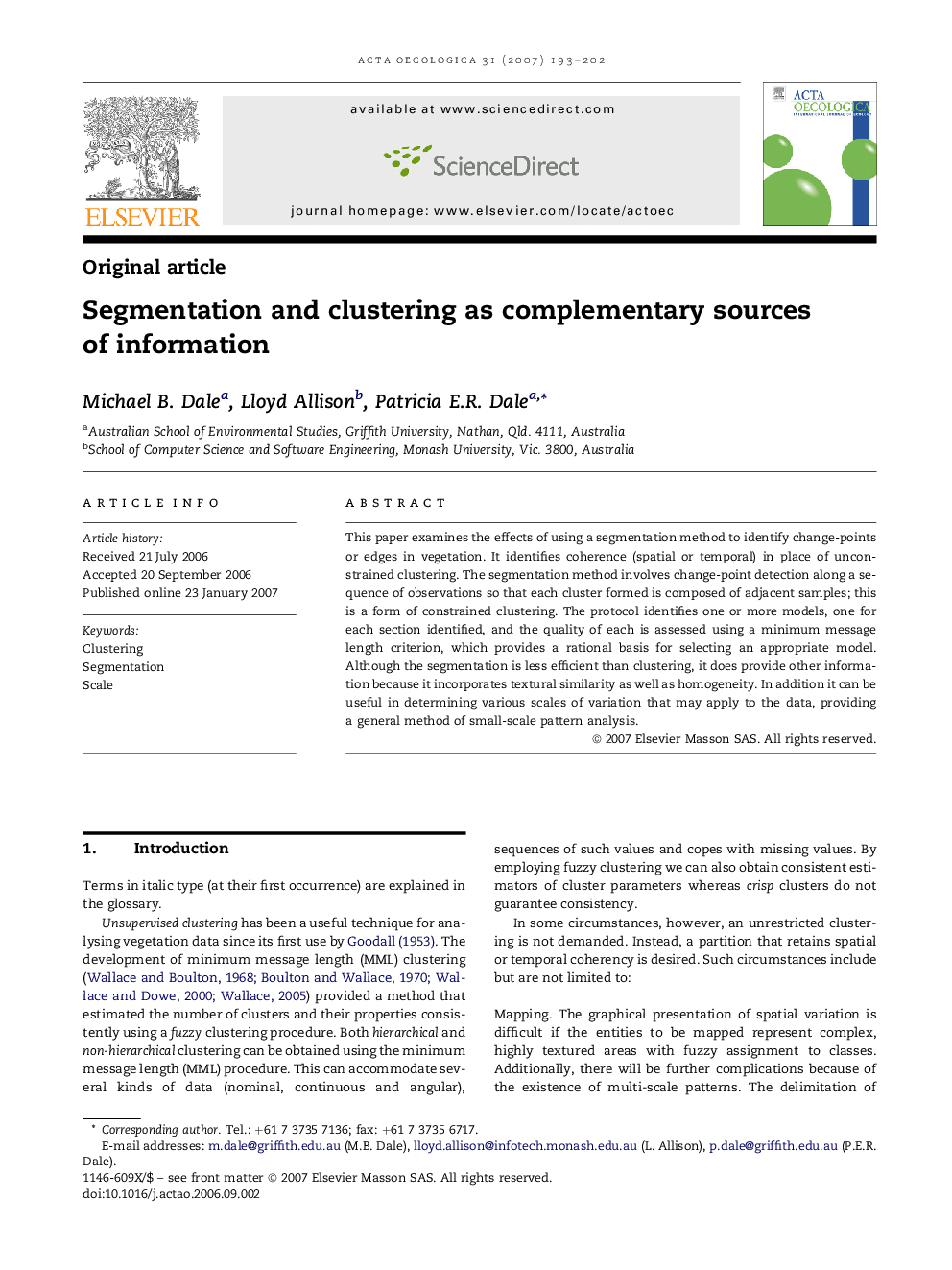| کد مقاله | کد نشریه | سال انتشار | مقاله انگلیسی | نسخه تمام متن |
|---|---|---|---|---|
| 4381589 | 1304082 | 2007 | 10 صفحه PDF | دانلود رایگان |

This paper examines the effects of using a segmentation method to identify change-points or edges in vegetation. It identifies coherence (spatial or temporal) in place of unconstrained clustering. The segmentation method involves change-point detection along a sequence of observations so that each cluster formed is composed of adjacent samples; this is a form of constrained clustering. The protocol identifies one or more models, one for each section identified, and the quality of each is assessed using a minimum message length criterion, which provides a rational basis for selecting an appropriate model. Although the segmentation is less efficient than clustering, it does provide other information because it incorporates textural similarity as well as homogeneity. In addition it can be useful in determining various scales of variation that may apply to the data, providing a general method of small-scale pattern analysis.
Journal: Acta Oecologica - Volume 31, Issue 2, March–April 2007, Pages 193–202